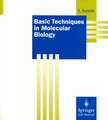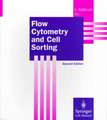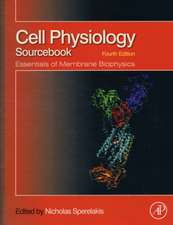Lectins and Glycobiology: Springer Lab Manuals
Editat de Hans-Joachim Gabius, Sigrun Gabiusen Limba Engleză Paperback – 16 dec 2011
Din seria Springer Lab Manuals
-
 Preț: 385.84 lei
Preț: 385.84 lei -
 Preț: 362.59 lei
Preț: 362.59 lei - 18%
 Preț: 973.69 lei
Preț: 973.69 lei - 15%
 Preț: 695.85 lei
Preț: 695.85 lei - 18%
 Preț: 997.40 lei
Preț: 997.40 lei -
 Preț: 385.84 lei
Preț: 385.84 lei -
 Preț: 382.18 lei
Preț: 382.18 lei - 24%
 Preț: 1045.10 lei
Preț: 1045.10 lei - 15%
 Preț: 641.20 lei
Preț: 641.20 lei - 18%
 Preț: 939.33 lei
Preț: 939.33 lei -
 Preț: 381.43 lei
Preț: 381.43 lei - 15%
 Preț: 637.59 lei
Preț: 637.59 lei - 15%
 Preț: 639.25 lei
Preț: 639.25 lei -
 Preț: 376.68 lei
Preț: 376.68 lei - 18%
 Preț: 1822.40 lei
Preț: 1822.40 lei - 18%
 Preț: 953.82 lei
Preț: 953.82 lei - 15%
 Preț: 645.14 lei
Preț: 645.14 lei - 15%
 Preț: 689.93 lei
Preț: 689.93 lei - 23%
 Preț: 821.59 lei
Preț: 821.59 lei - 5%
 Preț: 727.44 lei
Preț: 727.44 lei - 18%
 Preț: 1225.31 lei
Preț: 1225.31 lei - 15%
 Preț: 657.39 lei
Preț: 657.39 lei - 18%
 Preț: 949.73 lei
Preț: 949.73 lei -
 Preț: 386.99 lei
Preț: 386.99 lei - 15%
 Preț: 657.25 lei
Preț: 657.25 lei - 19%
 Preț: 555.63 lei
Preț: 555.63 lei -
 Preț: 380.63 lei
Preț: 380.63 lei - 18%
 Preț: 1226.11 lei
Preț: 1226.11 lei - 15%
 Preț: 649.22 lei
Preț: 649.22 lei - 15%
 Preț: 632.55 lei
Preț: 632.55 lei - 19%
 Preț: 584.77 lei
Preț: 584.77 lei - 15%
 Preț: 639.41 lei
Preț: 639.41 lei - 15%
 Preț: 644.82 lei
Preț: 644.82 lei -
 Preț: 390.25 lei
Preț: 390.25 lei - 18%
 Preț: 781.31 lei
Preț: 781.31 lei - 15%
 Preț: 644.63 lei
Preț: 644.63 lei -
 Preț: 382.36 lei
Preț: 382.36 lei -
 Preț: 363.12 lei
Preț: 363.12 lei - 18%
 Preț: 961.23 lei
Preț: 961.23 lei -
 Preț: 416.29 lei
Preț: 416.29 lei - 18%
 Preț: 783.35 lei
Preț: 783.35 lei - 18%
 Preț: 791.88 lei
Preț: 791.88 lei - 15%
 Preț: 675.22 lei
Preț: 675.22 lei - 23%
 Preț: 1311.58 lei
Preț: 1311.58 lei -
 Preț: 381.43 lei
Preț: 381.43 lei
Preț: 588.70 lei
Preț vechi: 726.80 lei
-19% Nou
Puncte Express: 883
Preț estimativ în valută:
112.66€ • 122.33$ • 94.64£
112.66€ • 122.33$ • 94.64£
Carte tipărită la comandă
Livrare economică 18-24 aprilie
Preluare comenzi: 021 569.72.76
Specificații
ISBN-13: 9783642779466
ISBN-10: 3642779468
Pagini: 544
Ilustrații: XX, 521 p.
Dimensiuni: 193 x 242 x 29 mm
Ediția:Softcover reprint of the original 1st ed. 1993
Editura: Springer Berlin, Heidelberg
Colecția Springer
Seria Springer Lab Manuals
Locul publicării:Berlin, Heidelberg, Germany
ISBN-10: 3642779468
Pagini: 544
Ilustrații: XX, 521 p.
Dimensiuni: 193 x 242 x 29 mm
Ediția:Softcover reprint of the original 1st ed. 1993
Editura: Springer Berlin, Heidelberg
Colecția Springer
Seria Springer Lab Manuals
Locul publicării:Berlin, Heidelberg, Germany
Public țintă
ResearchCuprins
1 Lectins: Insights into the State of Knowledge by Literature Searches.- Chemical Synthesis of Lectin Ligands.- 2 Synthetic Ligands for Lectins.- 3 Sugar-Polyacrylamide Conjugates as Probes for Cell Lectins.- Purification and Characterization of Lectins.- 4 Isolation of Plant Lectins.- 5 A General Procedure for the Purification of Fimbrial Lectins from Escherichia coli.- 6 Isolation, Detection, and Ligand Binding Specificity of a Lectin Uniquely Found in Rat Kupffer Cells.- 7 Galaptin: Isolation, Electrophoretic Analysis, Peptide Preparation for Sequencing and Carbohydrate-Binding Site Specificity.- 8 Determination of Carbohydrate Specificity in Solid-Phase Assays.- 9 Analysis of Isoelectric Variants of Carbohydrate-Binding Protein 35.- 10 Chemical Modification of Lectins by Group-Specific Reagents.- Biophysical Methods for the Characterization of Lectin-Ligand Interactions.- 11 Study of Oligosaccharide-Lectin Interaction by Various Nuclear Magnetic Resonance (NMR) Techniques and Computational Methods.- 12 Lectin-Glycoconjugate Cross-Linking Interactions.- 13 Lectins as Analytical Probes to Define the Physical Characteristics of Binding Events.- Lectins as Tools for the Characterization of Glycoconjugates.- 14 Glycoprotein-Lectin-Immunosorbent Assay (GLIA).- 15 Use of Lectins in Quantification and Characterization of Soluble Glycoproteins.- 16 Lectins as Indicators of Disease-Associated Glycoforms.- 17 Viral Lectins for the Detection of 9-O-Acetylated Sialic Acid on Glycoproteins and Glycolipids.- 18 Affinoblotting Detection of the Glycoprotein Ligands of the Endogenous Cerebellar Soluble Lectin CSL and of Concanavalin A.- Determination of Expression of Lectins and Their Ligands.- 19 An Enzyme Immunoassay (EIA) for a Human Endogenous ?-Galactoside-Binding Lectin.- 20Analysis of Lectin Expression by Immunoblotting.- 21 Application of Immuno- and Affinocytochemistry to the Detection of an Endogenous ?-Galactoside-Specific 14 kDa Lectin and Its Ligands.- Lectins and Neoglycoconjugates in Histochemical and Cytochemical Analysis.- 22 Tissue Lectins in Histopathology — Markers in Search of Their Physiological Ligands.- 23 Lectin Cytochemistry Using Colloidal Gold Methodology.- 24 Neoglycoprotein-Gold Complexes as a Tool in the Study of Carbohydrate-Specific Binding Proteins.- 25 Lectins and Neoglycoproteins — Attractive Molecules to Study Glycoconjugates and Accessible Sugar-Binding Sites of Lower Vertebrates Histochemically.- 26 In Situ Microdensitometry of Neoglycoprotein Staining: Detection of Tissue-Site Specific Patterns of Endogenous Lectin Expression.- 27 Lectin and Neoglycoprotein Binding to Cells.- 28 Use of Lectins for the Phenotypic Characterization of Cultured Cell Monolayers.- 29 The Use of Lectins in the Purification of Cellular Subpopulations.- 30 Lectin-Binding Properties of Extracellular Matrix in the Chick Oral Membrane.- 31 Biodistribution of Radioactive Lectins.- 32 Lectin Interactions with Intestinal Epithelial Cells and Their Potential for Drug Delivery.- 33 Neoglycoprotein-Liposome Conjugates for Studies of Membrane Lectins.- Lectins and Biosignaling.- 34 Effects of Lectins on Adenylylation and Phosphorylation of Plasma Membrane Proteins.- 35 Lectin-Induced Alterations in the Level of Phospholipids, Inositol Phosphates, and Phosphoproteins.- 36 Measurement of Intracellular Calcium Levels by Flow Cytometry Following Treatment of Murine Macrophage/Monocytes with Mistletoe Lectin.- 37 Measurement of Lectin-Induced Superoxide Release from Human Neutrophils.- 38 Isolation of Lymphocytes and Accessory Cells forAssays of Mitogenicity.- 39 Determination of Lectin-Mediated Augmentation of Natural Killer Cell-Mediated Cytotoxicity.- 40 Effects of Pseudomonas aeruginosa PA-I and PA-II Lectins on Tumoral Cells.- 41 Determination of Lectin-Dependent Alterations of Cellular Parameters by Immunophenotyping During Adjuvant Lectin Application.- 42 Lectin-Dependent Alteration in Availability of Nutrients in Serum and Erythrocytes.- Lectins and Cell Adhesion.- 43 Bacterial Adhesion to Immobilized Carbohydrates.- 44 Quantitative Micro-Adhesion Assay on Polystyrene Matrices.- 45 Lectin-Mediated Binding Activities of Bradyrhizobium japonicum.- 46 Identifying a Role for Carbohydrate Recognition in Regulating Neuronal Architecture.- 47 Identifying Cell-Cell Adhesion-Inhibitory Antibodies to Cell Surface Proteins Using Divalent Primary and Monovalent Secondary Antibodies — a Method Developed Using Cellular Slime Molds.- 48 A Modified Capillary Method for Measuring Bacterial Chemotaxis.- Molecular Genetics of Lectins.- 49 Cloning Lectin Genes.- 50 Cell-Free Synthesis of Lectins.- 51 cDNA Cloning and Expression of Plant Lectins from the Legume Family.- 52 Production of Intact Recombinant Lectins in Escherichia coli.- 53 Construction of Mutant Lectin Genes by Oligonucleotide-Directed Mutagenesis and Their Expression in Escherichia coli.- 54 Mammalian Lectin as Transforming Growth Factor.- 55 Identification and Expression of a Protozoan Invasion Factor: Penetrin, the Heparin-Binding Protein from Trypanosoma cruzi.









